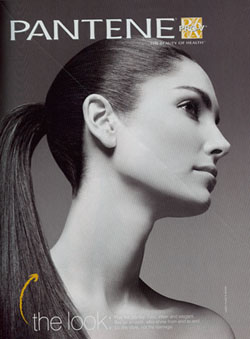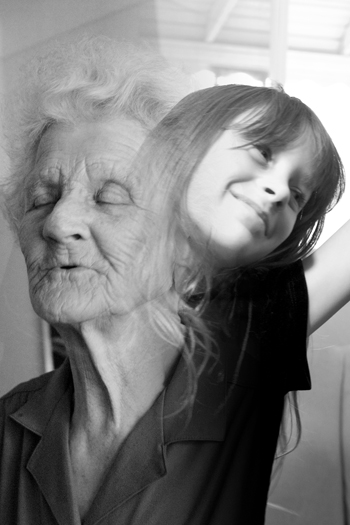In “The Power of Self-Definition” Patricia Hill Collins describes identity self-construction in terms of race and gender. Bell and Valentine’s article, ““The Sexed Self: Strategies of Performance, Sites of Resistance” concentrates on how sexual identity impacts life. Both show how the multiple dimensions of identity impact an individual.
According to Hill Collins, Black women’s standpoint provides them with an “alternative worldview to that embedded in institutional locations of domination” (1990, p. 103). Alexis DeVeaux says that in order to understand the larger groups around us it is important to first understand the “space between” (qtd in Hill Collins, 1990, p. 104). Black women seek to do this by exploring their relationships with each other and between themselves and dominant culture. Other methods which contribute to self-definition include music, specifically blues, and scholarship and literature (Hill Collins, 1990).
Self-defining in these ways allows Black women to move from victim to freedom to action. Blues music empowers women to act by using their individual voices to sing about issues experienced collectively (Hill Collins, 1990, p.100). Through music, Black women give voice to the relationship between respect and power (Hill Collins, 1990, p. 108). Self-definition through music, literature, and community provides Black women with “the spirit of independence”, skills to become “self-reliant”, and the support and encouragement required to challenge traditional stereotypes about Black women. (Hill Collins, 1990, p.109). By creating their own definitions, Black women place “the power to save the self within the self” rather than looking outside for rescue (Hill Collins, 1990, p. 112). The process of self-definition is also one of consciousness raising. This creates the locus for social change, that is, to be valued as Black women by their own definition, rather than to live the struggle “of two lives, one for them [the concept of the Black woman as defined by the dominant culture] and one for ourselves” (Gwaltney qtd in Hill Collins, 1990, p. 94).
Bell and Valentine’s article “The Sexed Self” focuses on people with marginalized sexual identities. As an invisible group, lesbians do not have the ease in forming community (Bell and Valentine, 1995, 145) afforded the Black women described in Hill Collins (1990). Bell and Valentine also describe the multiple identities that gays and lesbians often carry in order to “pass” (Bell and Valentine, 1995, 145). This is similar to Hill Collins saying Black women need to understand the dominant culture while at the same time creating their own identities (Hill Collins p. 91). Like Black women, lesbians must also “manage their identities in order to ‘fit’ within the boundaries of the hegemonic heterosexual discourse” (Bell and Valentine p.146).
Lesbian women have not had the same history of music and literary expression that has been so helpful to Black women in self-definition. Coming-out is inherent with risks (Bell and Valentine, 1995, pp.117-118). But Black women do not share lesbian potential for invisibility. Because the “notion of ‘what a lesbian looks like’” (Bell and Valentine, 1995, p.149) lacks a concrete answer, defining and identifying a “lesbian” is much more difficult than defining or identifying a “Black woman”. Lesbians may decide to define themselves as ‘bisexual ‘or as ‘heterosexual but having relationships with other women’ (Bell and Valentine, 1995, p.146). The label “lesbian” is fraught with complications and loss of power. Both groups are constantly aware of their audience (Hill Collins, 1990, p. 94, Bell and Valentine, 1995, p. 156) and must choose how to perform. The fluid definition of lesbian suggests that heterosexual remains the only socially acceptable orientation or else self-identity is also a fluid construct.
Bell and Valentine describe body modification as a way to identify one’s self as “other”. These choices remove invisibility and then like a different skin colour they serve as markers of difference (1995 p.150).
Bell and Valentine’s description of anger in AIDS activism shows a community that can mobilize. Like a pride parade, a Black women’s music festival provides an opportunity to engage with others, celebrate positive action and continue the struggle of the subordinated. Exposing queer practices (Bell and Valentine, 1995, p.153) forces the dominant culture to take notice of the marginalization of gays and lesbians, much like the music and literature of Black women calls attention to their concerns.
In Bell and Valentine’s conclusion they suggest, “the very notion of stable identities becomes destabilised, opening up new radical spaces for subjectivities freed from rigid binarisms and cultural matrices” (1995, p.157). Deconstructing identities does not provide the same political impetus created by constructing an identity. (1995, p. 157). Perhaps this is why Black women have had more success in organizing for social recognition and change. Bell and Valentine conclude that “rethinking our (sexed) selves” may provide help in defining spaces for marginalized bodies (1995, p.157). Looking to the womanist movement may provide some ideas on how this could be done.
Works Cited
Hill Collins, P. (1990). The Power of Self-Definition. In Black Feminist Thought: Knowledge, Consciousness and the Politics of Empowerment. (Pp. 91-114). New York: Routledge.
Bell, D. and G. Valentine. (1995). The Sexed Self: Strategies of Performance, Sites of Resistance in Mapping the Subject: Geographies of Cultural Transformation. (Pp. 143-157). London: Routledge.
 Comments(1)
Comments(1)
